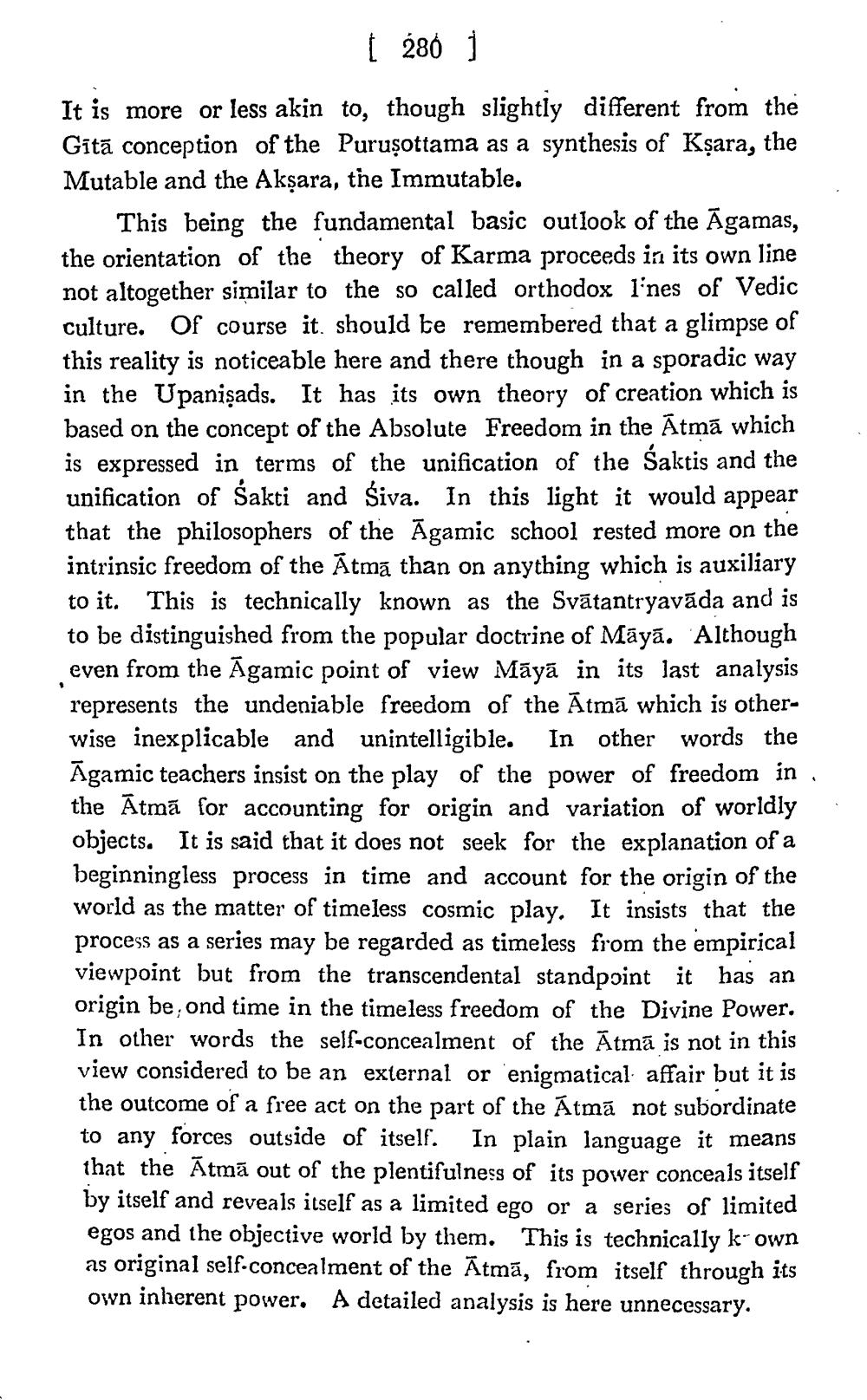________________
[ 280 ] It is more or less akin to, though slightly different from the Gītā conception of the Puruşottama as a synthesis of Kşara, the Mutable and the Akşara, the Immutable.
This being the fundamental basic outlook of the Āgamas, the orientation of the theory of Karma proceeds in its own line not altogether similar to the so called orthodox lines of Vedic culture. Of course it should be remembered that a glimpse of this reality is noticeable here and there though in a sporadic way in the Upanişads. It has its own theory of creation which is based on the concept of the Absolute Freedom in the Atmā which is expressed in terms of the unification of the Śaktis and the unification of Śakti and Śiva. In this light it would appear that the philosophers of the Āgamic school rested more on the intrinsic freedom of the Atmā than on anything which is auxiliary to it. This is technically known as the Svātantryavāda and is to be distinguished from the popular doctrine of Māyā. Although even from the Āgamic point of view Māyā in its last analysis represents the undeniable freedom of the Ātmā which is otherwise inexplicable and unintelligible. In other words the Āgamic teachers insist on the play of the power of freedom in the Atmā for accounting for origin and variation of worldly objects. It is said that it does not seek for the explanation of a beginningless process in time and account for the origin of the world as the matter of timeless cosmic play. It insists that the process as a series may be regarded as timeless from the empirical viewpoint but from the transcendental standpoint it has an origin be, ond time in the timeless freedom of the Divine Power. In other words the self-concealment of the Atmā is not in this view considered to be an external or 'enigmatical affair but it is the outcome of a free act on the part of the Atmā not subordinate to any forces outside of itself. In plain language it means that the Ātmā out of the plentifulness of its power conceals itself by itself and reveals itself as a limited ego or a series of limited egos and the objective world by them. This is technically k own as original self-concealment of the Atmā, from itself through its own inherent power. A detailed analysis is here unnecessary.




